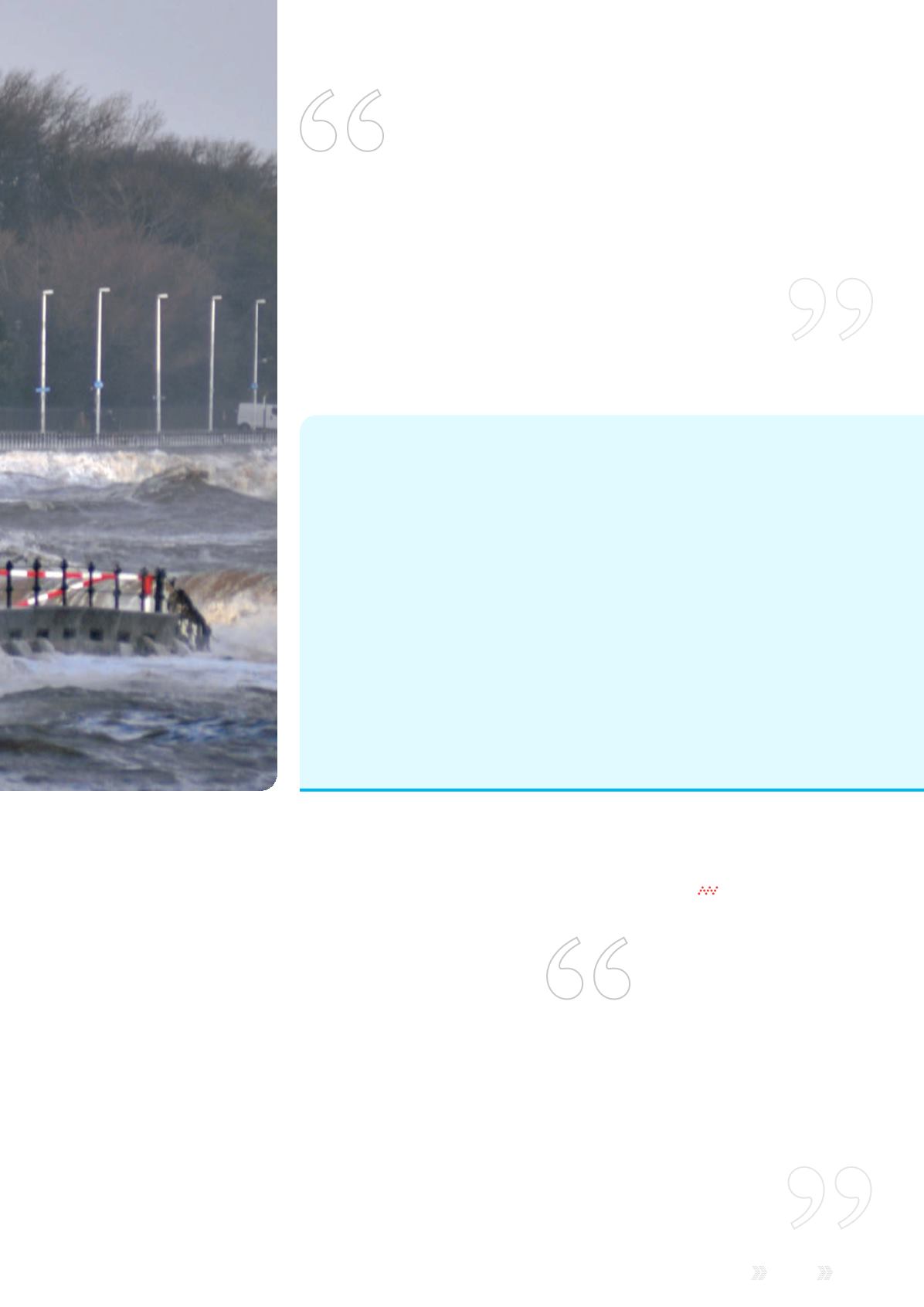
Reach
Issue 6 2014 |
11
Rapid response for the RNLI
Emergency situations call for instant reactions, as the December storms
illustrated. The RNLI teams were working at full stretch, including their inshore
flood rescue team – a voluntary force that helps with extreme flood situations.
Due to the scale of the incident, the RNLI required additional radios for their
inshore team, and called on Airwave for help.
Within eight hours, 42 reconfigured radios were on their way, enabling the
inshore team to communicate with the Fire & Rescue Services co-ordinating
the rescue efforts.
“The Airwave Network performed faultlessly in our experience of deployments
in all areas of the UK. The continuous coverage and interoperability was
singled out by our teams as fundamental in certain areas, and the availability
of the Airwave talkgroups allowed accurate information to be passed to all
RNLI assets and the commander quickly and efficiently,” said Alex Marshall,
RNLI Staff Officer Operations (Coms, Nav, Surveillance & Policy).
The Airwave Network performed faultlessly in our
experience of deployments in all areas of the UK.
The continuous coverage and interoperability was
singled out by our teams as fundamental in
certain areas
Alex Marshall, Staff Officer Operations (Coms, Nav, Surveillance & Policy).
“Our severe weather planning
response is very mature, as Scotland
in particular experiences challenging
conditions on a regular basis. We
have to ensure that we are prepared
for every eventuality, and that we
can be both proactive and reactive in
terms of customer requirements.
“The December storms were
unusual however in that the type of
weather changed dramatically as
the day progressed. We prioritised
support for critical sites, for example
installing a mobile base site on the
Norfolk coast in case the tidal surge
damaged the fixed site.
“A Major Incident Management
team was assembled, ready to
respond to the ever changing
aspects of the severe weather. The
team included; senior operational
managers, field engineering, network
management and customer facing
staff and the business continuity
team. Each area has a specific role or
function. For example, the Network
Management team constantly
monitored the status of the Airwave
sites. Using information gathered
from our customers, the team
was able to deploy the engineering
resources in a measured and
proportional manner, in addition
to advising the Emergency Services
on how to best to use the system
in what was an extremely
demanding situation.
“Emergency planning is part
and parcel of our response suite
– the Airwave Service is essential
to the command and control of
the emergency services. Our field
and service centre teams worked
tirelessly: the preparation, efforts
Emergency planning is
part and parcel of our
response suite – the Airwave
Service is essential to the
command and control of the
emergency services
Mark Jones, Airwave’s Head of
Business Continuity and Planning
and inbuilt resilience of the
Airwave Network meant that our
customers reported little or no
impact on their service.”
Picture courtesy of Ken Clark


